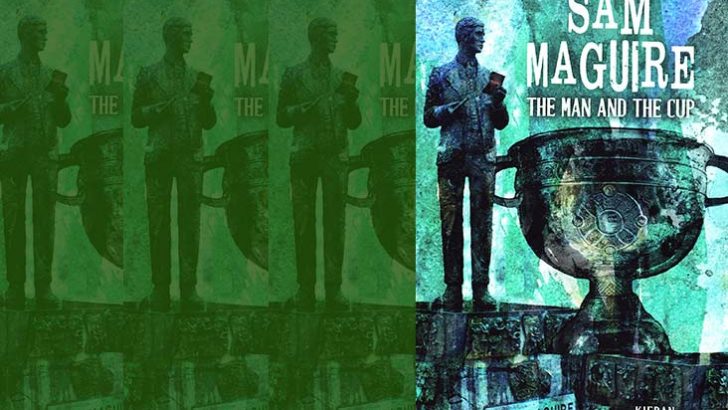Sam Maguire: The Man and The Cup by Kieran Connolly (Mercier Press, €12.99)
As last week’s dramatic victory by Dublin over Mayo showed, the Sam Maguire Cup is much better known than the man after whom it was named and honours.
This opportune account of Sam Maguire and noteworthy occasions and persons associated with the cup will be of the great interest to GAA enthusiasts across the country as it tells the story of the name behind the cup.
Sam Maguire was born in Dunmanway, Co Cork, on March 1, 1877. He was educated locally. Like others from West Cork, including Michael Collins, he secured an appointment in the British postal service, working in the central sorting office in London.
Active member
Although, as a Protestant, he had little acquaintance with Gaelic games in his youth, in London he joined the GAA and was an active member both as an administrator and a player.
He featured in the London teams which contested the Away All-Ireland Football Finals of 1900, 1901, 1902 and 1903, which were played in 1902, 1903, 1904 and 1905 respectively.
Soon after arriving in London Maguire became a member of the IRB and swore Michael Collins into the organisation in 1909. During World War I the membership of the IRB in England was estimated to have been about 2,000 and Maguire was regarded as one of its leading members.
During the War of Independence he was in charge of IRA intelligence in London. He was also Collins’ principal contact in London for purchasing arms and smuggling them into Ireland. With others he planned and prepared a number of high-profile assassinations in London, but these for various reasons had to be abandoned.
Yet it seems he was the link by which Collins’ directive that Field Marshal Sir Henry Wilson, then the military adviser to the Northern Ireland government, be assassinated was delivered – an act of war delayed until six months after the Treaty was signed.
Yet influenced by Collins, Maguire supported the Anglo-Irish Treaty. He returned to Ireland in 1923 and secured employment in the Irish Free State’s department of posts and telegraphs. Remaining close to his old comrades in the IRA, he conspired with a number of them when they initiated a mutiny in the Irish Free State army.
Following the suppression of the mutiny, those responsible for army intelligence claimed that during the mutiny he had urged the assassination of members of the cabinet and senior officers in the army.
He was dismissed from his post in the civil service in 1926 and, despite subsequent appeals that he be reinstated, he remained unemployed. He returned to Dunmanway destitute and after ailing for some time he died of tuberculosis on February 6, 1927.
Maguire’s former comrades were determined that his sterling contribution to the struggle for independence should not be forgotten. They donated the Sam Maguire Perpetual Memorial Cup to the GAA to be awarded to the winners of the All-Ireland football final, to replace the previous cup which had been lost.
The trophy, based on the design of the Ardagh chalice, was first presented in 1928 to the captain of the Kildare team. It was replaced by a replica in 1988 and is now on display in the GAA museum in Croke Park.
In a chapter, headed ‘Significant Moments in the History of the All-Ireland Finals’, the author provides a wealth of traditional lore, some well-known, some not so well-known. The concluding chapter has statistical information on every aspect of the All-Ireland Football Championship.
This includes a list of the five Kerry footballers who had the privilege of lifting the Sam Maguire Cup high above their heads on the Hogan Stand on no less than eight occasions. Here also is the ‘Team of the Century’ and the ‘Team of the Millennium’ and a listing of the ‘Players of the Year’. Regular readers as well as sports followers and football pundits will find this book to be a fascinating read.


